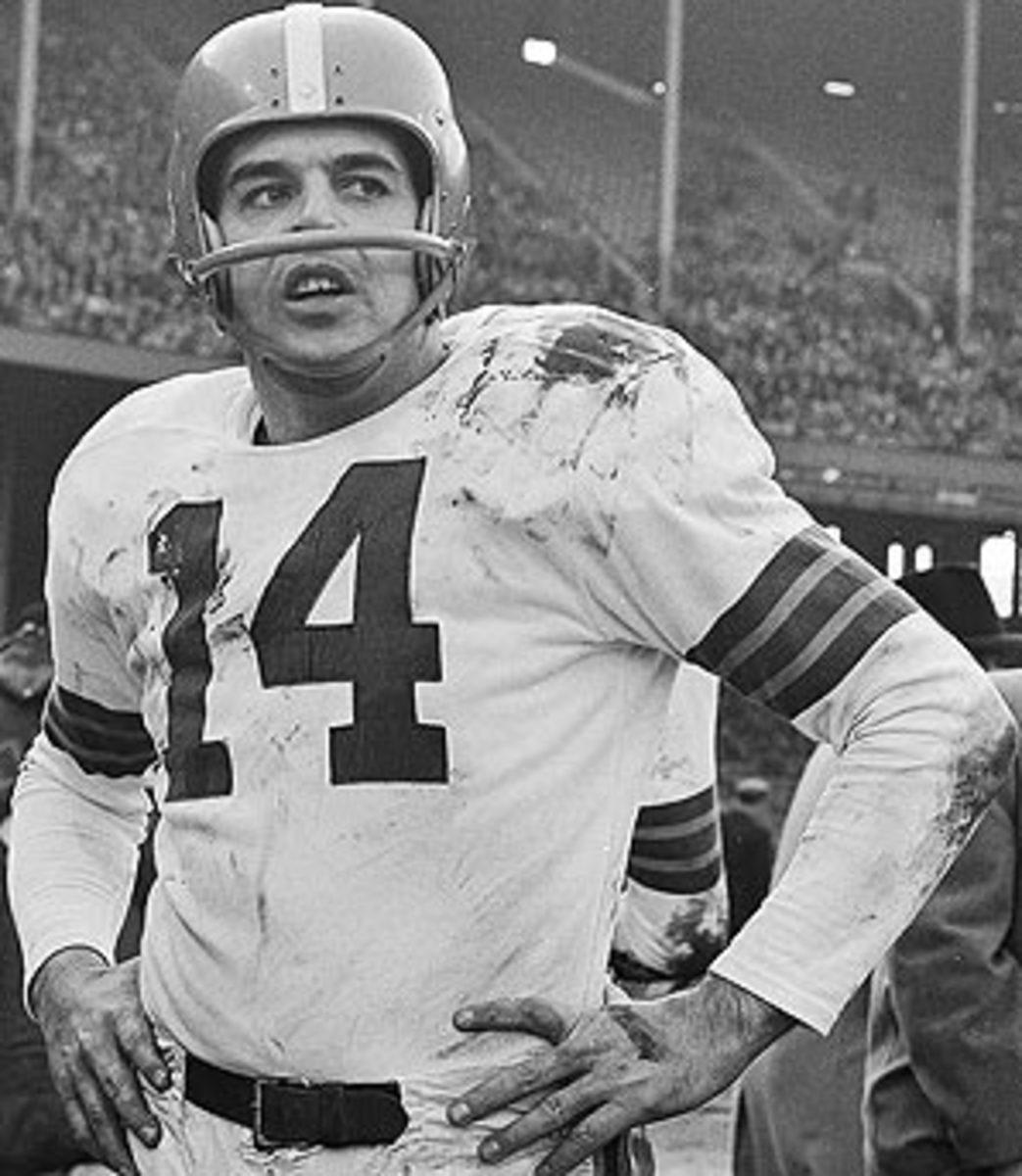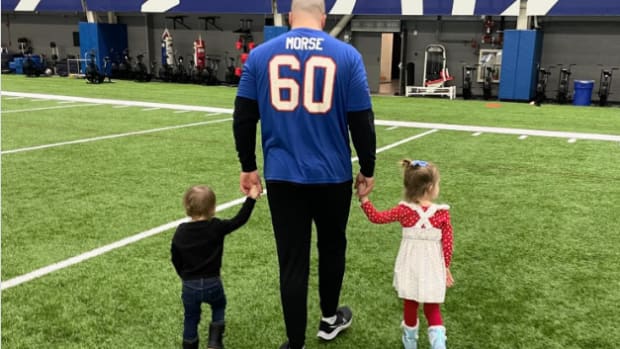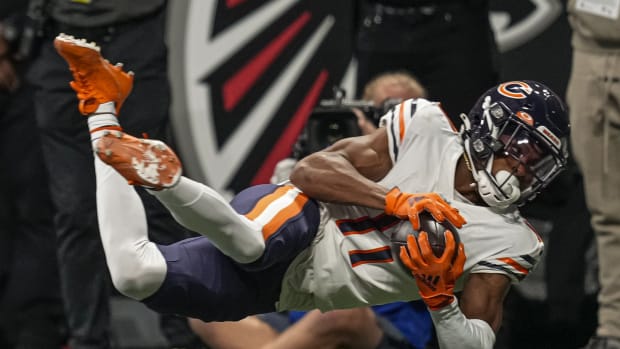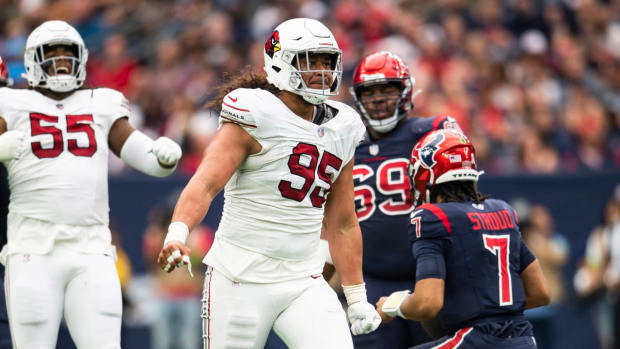Cold Hard Football Facts: Passing is truly the key to success in the NFL
The need to "establish the run" is so firmly ingrained in football culture that most people don't bother to question it.
But the Cold, Hard Football Facts aren't most people.
After years of studying pro football history, and after pioneering our "Quality Stats" that have a direct correlation to winning football games, two eternal truths emerge:
• Running the ball well is so distantly related to victory that it's legal for them to marry in all 50 states.
• The NFL is all about passing the ball well ... and it always has been.
You can routinely identify winners and losers in almost any NFL game simply by looking at who posted the highest average per pass attempt -- in other words, who fielded the most effective passing game. Week 3 of the 2008 season proved a textbook example: teams that posted a higher average per pass attempt won 12 of 16 games. Teams that ran more effectively (based upon YPA) were just 8-8.
Both results are fairly typical in any given week. The passing game is a very reliable measure of victory. Gauging winners by a team's ability to run the ball is a statistical coin flip.
But don't take last week's game as the final word.
Instead, consider no less an authority than the entire length and breadth of the passing game in pro football history. Consider, in other words, the Cold, Hard Football Facts.
The passing game made its modern evolution with the development of the T-formation in 1940. Since then, the most irrefutable truth in football is the same irrefutable truth in modern military circles: victory is forged through air superiority.
We looked at each of the signature dynasties and greatest teams since the advent of the T formation, and found one constant: dominant teams dominate with great pass offenses and/or great pass defenses. Their ability to run the ball is almost irrelevant.
The Bears ruled the 1940s, with four wins in five title-game appearances and a decade-long record of 81-26-3 (.750).
The Bears were largely bolstered by the innovative T-formation -- the spread formation of its time in that it was pioneered in the college ranks. The T-formation made it one back's job to take snaps from center and gave him the primary duties of calling signals and passing the ball. In other words, it helped the Bears develop the player recognized today as the first modern quarterback, Sid Luckman.
The primary benefit of the T-formation was not seen in the ground game. The primary benefit of the T-formation was seen in its revolutionary effect upon the passing game.
For an entire decade, the Bears utterly destroyed opponents when they passed. Just look at Luckman's average of 8.42 yards per pass attempt over his 12-year career (1939-50). It's still the second highest average in NFL history, 58 years after he last stepped on the field.
The Bears, in other words, dominated the 1940s because they dominated through the air.
The Browns of 1946 to 1955 stand indisputably as the sport's greatest dynasty: they appeared in 10 straight pro football championship games, winning seven of them. Cleveland dominated the fledgling AAFC during its four seasons (1946-49), winning all four championships and posting a spectacular 52-4-3 (.907) record (including postseason).
The Browns proved to be a big fish in a big pond, too, after moving to the NFL in 1950. They appeared in a record six straight NFL championship games from 1950 to '55, winning three (1950, 1954, 1955).
Pro football's greatest dynasty was built upon pro football's most explosive passing attack. Quarterback Otto Graham led the Browns in those 10 straight dynasty years, and stands today as the most productive passer in history, with a record 8.63 yards per attempt during his six NFL seasons. (Graham averaged an utterly unstoppable 9.51 YPA during Cleveland's four years dominating the AAFC).
It's no coincidence the most productive passer in pro football history led the greatest dynasty in pro football history. It's a direct cause-and-effect relationship.
The greatest fallacy in pro football wisdom is the need to establish the run. The second greatest fallacy is the belief that Vince Lombardi's Packers dominated on the ground and that Bart Starr was merely a game-managing quarterback.
The truth is the Packers were the most effective passing team of the decade and that Starr is one of the most ruthlessly efficient passers the game has ever seen. He led the league in passer rating five times in the 1960s (only Steve Young, six times, exceeded that mark) and averaged 7.85 yards per pass attempt, the eighth best mark in NFL history.
Starr's average is also the best of his era -- better than Johnny Unitas (7.76), Len Dawson (7.68), Sonny Jurgensen (7.56), Y.A. Tittle (7.52) or any of the other signature signal-callers of the 1960s.
Starr also did it with a ground game that's largely overrated. The Packers were a dominant ground team in the early 1960s. But later in the decade, including during their run of three-straight titles of 1965-67, the Packers offense was carried by Starr.
The Packers, in those three straight championship years, ranked 11th, 14th and fourth, respectively, in rushing yards per attempt. They ranked second, first and first, respectively, in yards per pass attempt. By 1967, the Packers had lost Hall of Fame running backs Paul Hornung and Jim Taylor. But, thanks to Starr, they still fielded the most efficient passing attack in football and were still champions.
The Packers were also dominant on pass defense. The 1967 Packers, for example, surrendered just 4.88 yards per pass attempt, making it the stingiest pass defense of the Super Bowl Era.
Combine a consistently great passing game with a consistently great pass defense and you have the only team in history to win five NFL titles in seven years. The Packers grabbed those rings no matter how well or how poorly the ground game performed, and no matter how many Hall of Famers were lugging the rock.
Don Shula's most famous team was not part of a "dynasty" per se -- the Dolphins have won just two championships -- but the 1972 Dolphins are, of course, the only undefeated team of the title-game era (1933-present).
The Dolphins are also a textbook example of the importance of the pass.
No doubt Miami was a run-first team. The 1972 Dolphins ran the ball 613 times that year, to just 259 pass attempts. And they were the first in history to field two 1,000-yard runners in one season.
But the difference for the Dolphins was when they did step back to pass, whether with Bob Griese or Earl Morrall, they ripped apart defenses nearly as well as any team in history.
The 1972 Dolphins boasted the No. 1 passing attack in football that year, with an average of 8.63 yards per attempt. In fact, it was one of the 20 best passing attacks of the Super Bowl Era (No. 18). In Miami franchise history, only Dan Marino's record-setting 14-2 Dolphins of 1984 boasted a more productive pass attack (9.00 YPA) than the 1972 team.
There have been a lot of teams in NFL history like the 1972 Dolphins: teams that ran the ball often or ran the ball effectively. The difference between those teams and the undefeated 1972 Dolphins was Miami's ability to break the will of its opponents with one of the most deadly passing attacks in history.
Pittsburgh's dynasty, like Green Bay's, is often remembered as a run-first team, thanks to Hall of Famer Franco Harris and the 1,000-yard tandem he comprised with Rocky Bleier.
But, like others before and after them, the Steelers of the 1970s won because of air superiority.
Few teams adapted better to the Live Ball Era rule changes of 1978 that opened up the passing attack. Chuck Noll unleashed Terry Bradshaw that season and the result was a team that led the NFL in passing yards per attempt in both 1978 (7.79) and 1979 (7.88), while winning their third and fourth Super Bowls of the decade.
Don't forget Bradshaw's dominance in the biggest game of the year, either. The big-armed gunslinger, mistake-prone for much of his career, averaged a stunning 11.1 YPA during his four Super Bowl victories. He broke the back of his Super Bowl opponents, especially the Cowboys, but also the Vikings and Rams, with his long aerial assault.
But no talk about the 1970s Steelers would be complete without a look at their famous Steel Curtain, arguably the most dominant defense in history.
Images of Mean Joe Greene and Jack Lambert swallowing runners at the line of scrimmage might be the enduring image of the Steel Curtain. But it's merely an image, not the real statistical story. In truth, the Steel Curtain was merely ordinary on run defense.
The Steel Curtain built its legend against the pass, routinely making life a living hell for opposing passers. The 1973 Steelers (5.36 yards per pass attempt), the 1974 Steelers (5.52 YPA) and the 1975 Steelers (5.54 YPA) all stand among the 25 best pass defenses of the Super Bowl Era. They include Pittsburgh's first two championship teams of 1974 and 1975.
To put the Steel Curtain's pass-defense dominance into perspective, consider that the 2006 Super Bowl champion Colts allowed 5.33 yards per attempt ... on the ground!
Bill Walsh's 49ers">49ers were cited as one of the revolutionary teams in the history of offensive football. They probably were, with their emphasis on quick, short, high-percentage, low-risk passes.
But Walsh might have argued that his was merely a continuation of the offenses he learned as an assistant to Paul Brown in Cincinnati, and that Otto Graham ran almost flawlessly in Cleveland in the 1940s and 1950s. (Walsh himself said that "West Coast offense" was a misnomer, and that it should have been known as the Ohio offense, in deference to its origins).
However you define it, the results are all that mattered: the 49ers, like Brown's Browns, dominated the NFL, winning five championships from 1981 to 1994 and winning 10 or more games in an amazing 16 consecutive seasons.
And the 49ers dominated the NFL because they dominated through the air. The 1989 champion 49ers averaged a stunning 9.49 yards per pass attempt, the greatest mark of the Super Bowl Era. The 1992, 1993 and 1994 49ers all rank among the 25 most efficient passing attacks in history.
The most amazing aspect of the San Francisco dynasty is that the 49ers maintained air superiority over two quarterbacking and two coaching administrations. Steve Young averaged 7.98 yards per attempt, the sixth greatest mark in history, while Joe Montana squeaks into the top 20 with 7.52 yards per attempt for his career. They also rank No. 1 and No. 5, respectively, in all-time career passer rating.
Tom Brady's Patriots did not always dominate in terms of passing yards per attempt. But they were dominant in the passing game overall, and they mark the next evolution of the low-risk, high-percentage passing attack pioneered by the 49ers 20 years earlier.
Brady falls just shy of historically high averages with 7.24 yards per attempt for his career (still above modern averages of about 6.9 YPA). But he's also a high-percentage passer with one of the lowest interception rates in history.
So there's no doubt he's one of the most efficient passers ever, as evidenced by his career passer rating of 92.9. It's the fourth highest mark in NFL history, one spot ahead of Montana on the all-time list.
And when New England dominated the league last year with the first 16-0 season, it was because it dominated through the air. The volume numbers were gaudy: Brady produced 50 TD passes and 4,806 passing yards. But volume passing numbers are irrelevant. Efficiency means everything. And the 2007 Patriots were clearly the most efficient passing team in football last year, as evidenced by Brady's league-leading 8.31 yards per attempt and his miniscule INT rate of 1.4 percent (eight picks in 578 attempts), one of the best single-season marks ever.
The Patriots, like any other team, were a middling organization when they fielded ordinary quarterbacks. When an extraordinary quarterback stepped on the stage, they became an extraordinary team. After all, the rise of the New England dynasty coincided directly with the ascension of Brady to the starting role.
You take a great coach and add to the mix one of the most efficient passers in the history of football, and you suddenly have a dominant power. (The flip-side, of course, is that you remove one of the best passers in history and the team suddenly doesn't look so hot, as Patriots fans will painfully learn this year.)
But none of this is a surprise for those who kick aside conventional wisdom about the need to run and instead look only at history: From Luckman to Starr to Brady, a dominant passing attack has been the single greatest difference between ordinary teams and extraordinary teams.






































